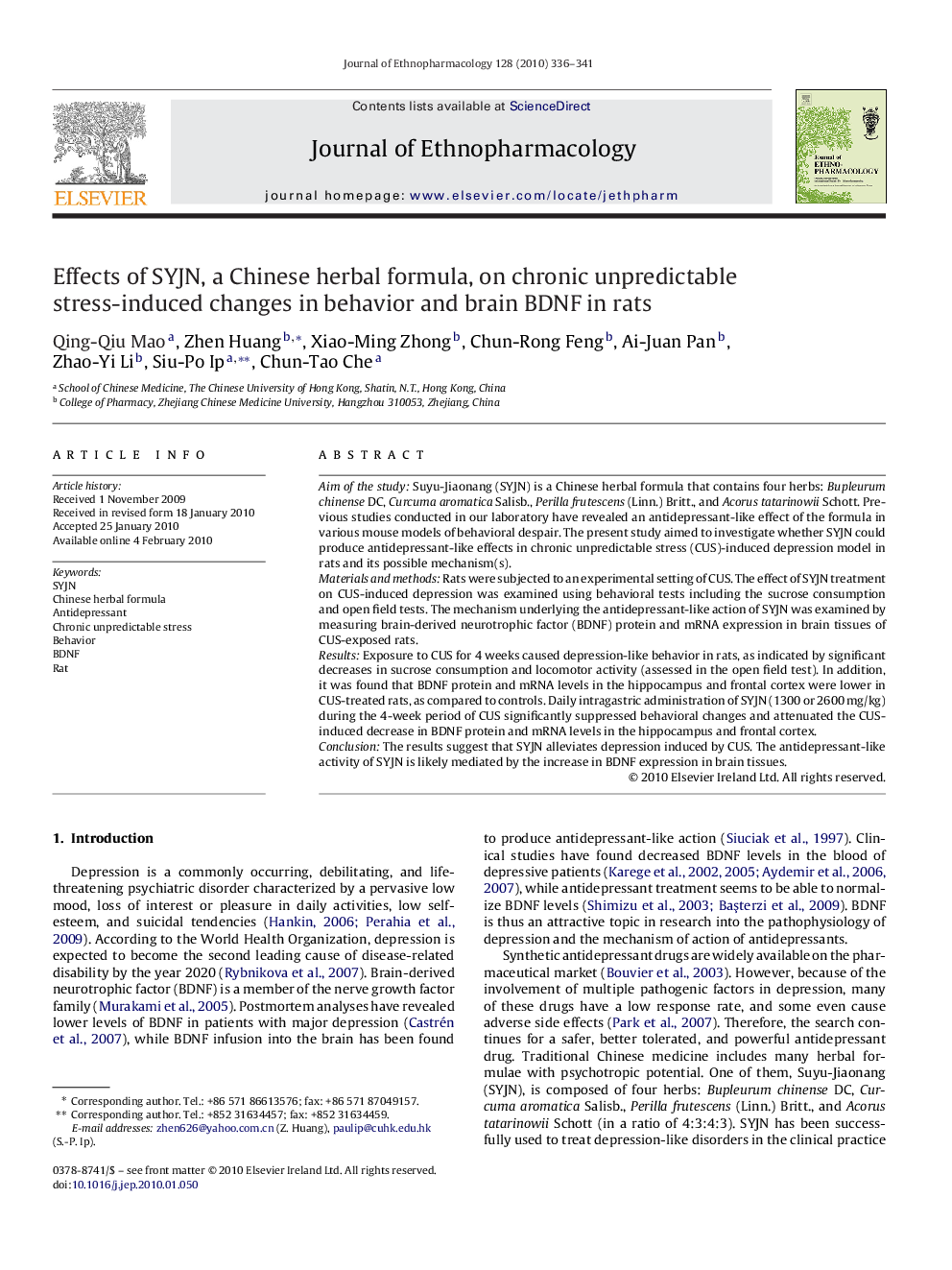| Article ID | Journal | Published Year | Pages | File Type |
|---|---|---|---|---|
| 2546164 | Journal of Ethnopharmacology | 2010 | 6 Pages |
Aim of the studySuyu-Jiaonang (SYJN) is a Chinese herbal formula that contains four herbs: Bupleurum chinense DC, Curcuma aromatica Salisb., Perilla frutescens (Linn.) Britt., and Acorus tatarinowii Schott. Previous studies conducted in our laboratory have revealed an antidepressant-like effect of the formula in various mouse models of behavioral despair. The present study aimed to investigate whether SYJN could produce antidepressant-like effects in chronic unpredictable stress (CUS)-induced depression model in rats and its possible mechanism(s).Materials and methodsRats were subjected to an experimental setting of CUS. The effect of SYJN treatment on CUS-induced depression was examined using behavioral tests including the sucrose consumption and open field tests. The mechanism underlying the antidepressant-like action of SYJN was examined by measuring brain-derived neurotrophic factor (BDNF) protein and mRNA expression in brain tissues of CUS-exposed rats.ResultsExposure to CUS for 4 weeks caused depression-like behavior in rats, as indicated by significant decreases in sucrose consumption and locomotor activity (assessed in the open field test). In addition, it was found that BDNF protein and mRNA levels in the hippocampus and frontal cortex were lower in CUS-treated rats, as compared to controls. Daily intragastric administration of SYJN (1300 or 2600 mg/kg) during the 4-week period of CUS significantly suppressed behavioral changes and attenuated the CUS-induced decrease in BDNF protein and mRNA levels in the hippocampus and frontal cortex.ConclusionThe results suggest that SYJN alleviates depression induced by CUS. The antidepressant-like activity of SYJN is likely mediated by the increase in BDNF expression in brain tissues.
Graphical abstractLong-term treatment with SYJN reverses chronic unpredictable stress-induced changes in behavior via increasing brain-derived neurotrophic factor (BDNF) contents in brain.Figure optionsDownload full-size imageDownload as PowerPoint slide
